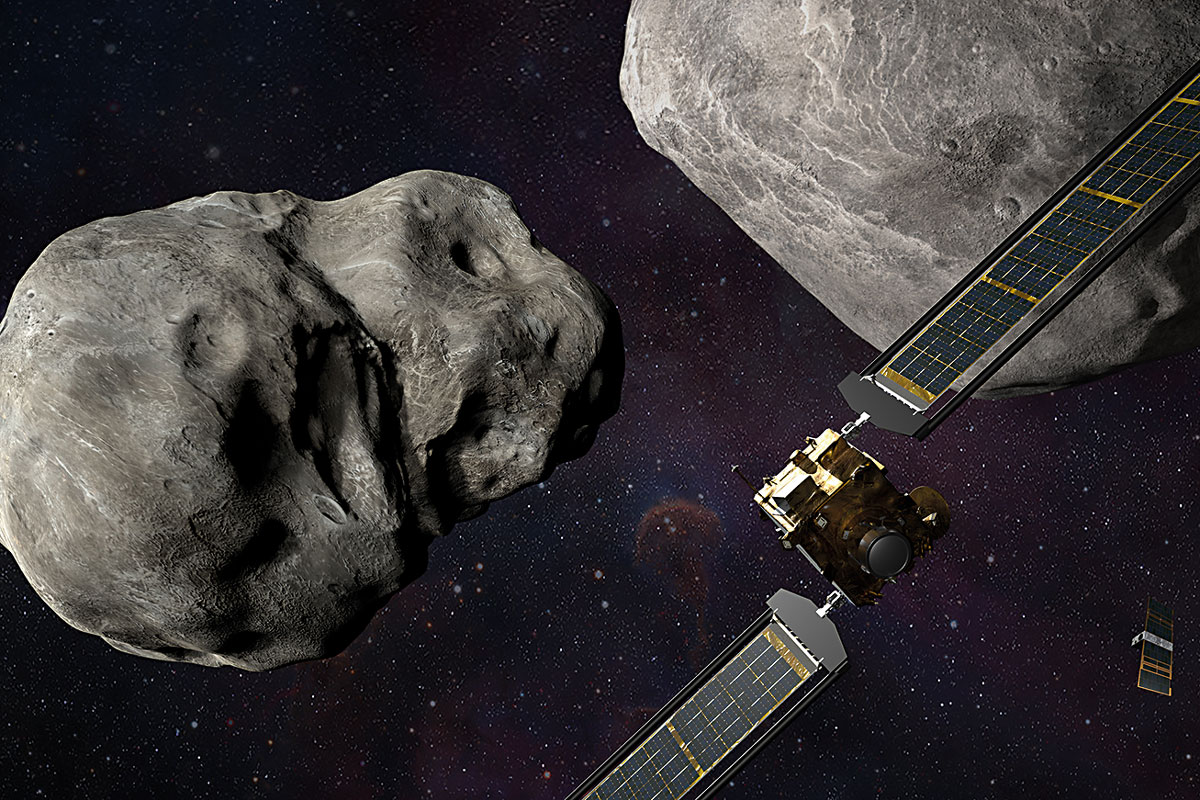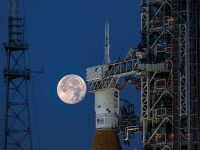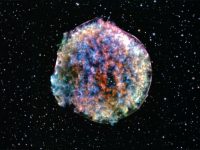
On 26 September 2022, NASA’s DART mission fired a 600 kg projectile at the neighbouring asteroid Dimorphos. It collided at a speed of almost 24,000 km/h. The reason for such force was to test the technology needed to deflect an asteroid that might be on a collision course with Earth in the future. The small Dimorphos, just 170 metres in diameter, is a satellite of a larger (and 100 times heavier) asteroid called Didymos. The trajectory of the projectile has been designed to bring Dimorphos closer to Didymos and reduce the orbital period of Didymos. By measuring how much this period is reduced, the effectiveness of the collision can be studied. An earlier mission, Deep Impact, in 2005 sent another projectile towards comet Tempel 1, which is ten thousand times more massive than Dimorphos. It did not deflect the comet (nor was it intended to), as the huge difference in mass between the projectile and the comet meant that no change in trajectory was to be expected, but it did allow the technology used here for the second time to be tested.
Fortunately, large impactors such as comet Tempel 1, with the capacity to cause major mass extinctions, are well controlled by the solar system’s small body monitoring programmes, and none are likely to hit Earth in the next couple of hundred years. The problem is small bodies a few hundred metres across, such as Dimorphos, with orbits that occasionally bring them dangerously close to Earth. We do not even know a third of this population of objects, estimated at tens of thousands, which could cause severe damage on a regional scale. For example, a collision between Dimorphos and Valencia would completely blow up the city and devastate an area similar to the province around it.
This is why many observatories around the world are dedicated to the detection and monitoring of NEAs (an acronym for Near Earth Asteroids). These efforts are concentrated in the large database of the Smithsonian Astrophysical Observatory’s Minor Planet Center, which records all discovered asteroids and comets, as well as their orbits and characteristics. There are also specialised programmes with telescopes and instruments dedicated to this task. All these projects are accelerating the rate at which new objects are being discovered each year. From less than five hundred a year in 2000, the rate rose to a thousand a year by 2010, and is currently around three thousand new small bodies a year.
But discovering an Earth-bound object is not the same as avoiding it. For the latter, early detection is crucial. Firstly, because the sooner the threatening object is nudged, the more effective the intervention will be. And secondly, because of the timeframe for designing a space mission to intercept it: we have to define the power of the rocket, which depends on the distance to the object; the best route to reach it and the best way to make the nudge effective; and how strong it should be, which in turn depends on the mass of the object. And then build it all up, send it out, and get it there. We are talking about a period of at least ten years.
At the moment, we already know that the DART mission was successful. According to NASA, even more so than expected: the latest measurements show that Dimorphos’ orbital period has decreased by 32 minutes! For the first time, it has been possible to change the orbit of an asteroid. Based on these results, it seems that we can indeed have an effective space defence system.




